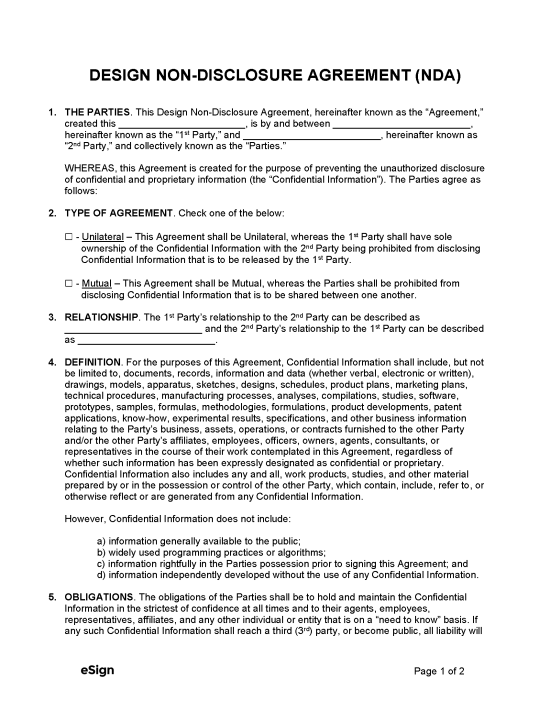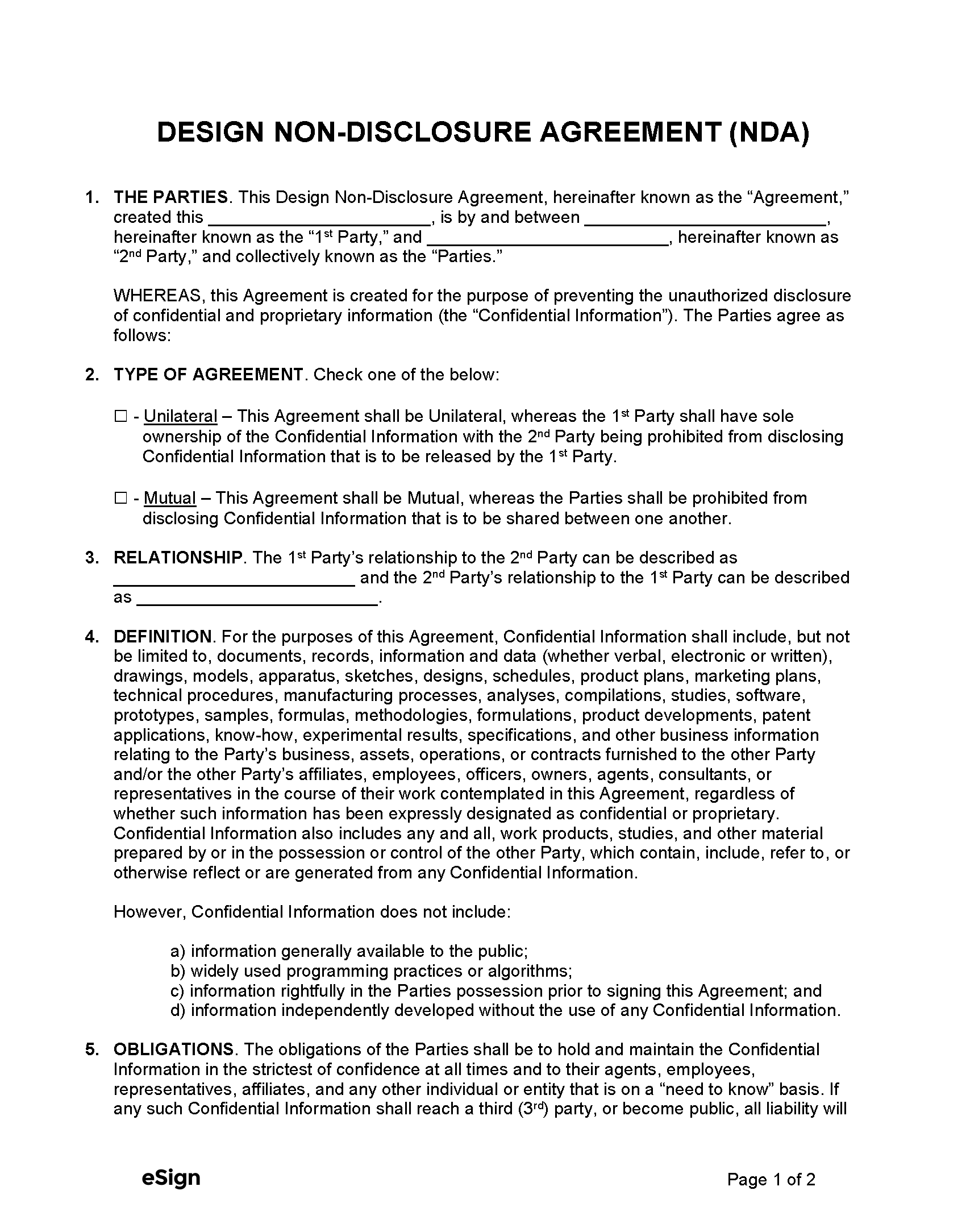Using a Design NDA
This confidentiality agreement is used before hiring a designer who will need access to proprietary information. In most cases, a business will have a designer sign the form to ensure they protect the company’s information and the project’s details (a “unilateral” agreement).
However, if the designer also has information they wish to protect, both parties will sign the NDA (a “mutual” agreement).
Sample
Download: PDF, Word (.docx), OpenDocument
DESIGN NON-DISCLOSURE AGREEMENT
1. THE PARTIES. This Design Non-Disclosure Agreement (the “Agreement”) created this [DATE], is by and between [NAME] (the “1st Party”) and [NAME] (the “2nd Party”), jointly known as the “Parties.”
2. DEFINITION. “Confidential Information” shall include, but not be limited to, documents, records, information and data (whether verbal, electronic or written), drawings, models, apparatus, sketches, designs, schedules, product plans, marketing plans, technical procedures, manufacturing processes, analyses, compilations, studies, software, prototypes, samples, formulas, methodologies, formulations, product developments, patent applications, know-how, experimental results, specifications, and other business information relating to the Party’s business furnished to the other Party, regardless if such information has been designated as confidential. Confidential Information includes materials prepared by or in the possession of the other Party, which contain or reflect any Confidential Information. However, Confidential Information does not include:
a) information generally available to the public.
b) widely used programming practices or algorithms.
c) information rightfully owned by the Parties before signing this Agreement.
d) information developed without the use of Confidential Information.
3. TYPE OF AGREEMENT. Check one of the below:
☐ – Unilateral – This Agreement shall be Unilateral, whereas the 1st Party shall have sole ownership of the Confidential Information with the 2nd Party being prohibited from disclosing Confidential Information that is to be released by the 1st Party.
☐ – Mutual – This Agreement shall be Mutual, whereas the Parties shall be prohibited from disclosing Confidential Information that is shared between them.
4. RELATIONSHIP. The 1st Party’s relation to the 2nd Party can be stated as [RELATION] and the 2nd Party’s relation to the 1st Party can be stated as [RELATION].
5. DUTIES. The Parties must hold the Confidential Information in the strictest of confidence and to any entity that “needs to know.” If Confidential Information reaches a 3rd party, all liability will be on the responsible Party. Neither Party shall, without the other Party’s written approval, use Confidential Information for their sole benefit. This Section shall not apply to the 1st Party if Unilateral is marked above.
6. TIME PERIOD. The bounded Party’s(ies’) duty to protect the Confidential Information shall remain in effect until such information no longer qualifies as a trade secret or written notice is given releasing such Party from this Agreement.
7. ENFORCEMENT. The Parties agree any breach of this Agreement would cause irreparable harm for which damages and/or equitable relief may be sought. The harmed Party shall be entitled to all remedies available at law.
IN WITNESS WHEREOF, the Parties have signed this Agreement on the date below.
1st Party’s Signature: ___________________ Date: ___________
Print Name: ___________________________
2nd Party’s Signature: ___________________ Date: ___________
Print Name: ___________________________

